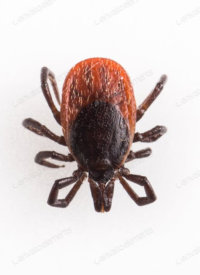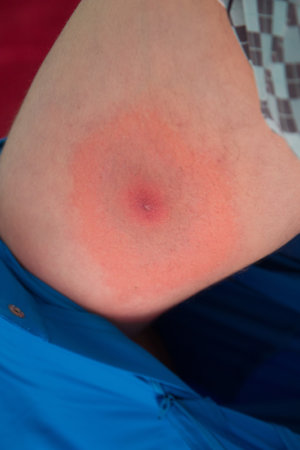Lyme Disease can be debilitating, but if you catch it early with the right treatment, you’ll recover much faster. While it’s less common to contract Lyme disease from ticks found in Texas woods, you can be exposed by migrating birds and animals, carrying black legged ticks. The Centers for Disease Control finds if you’re bitten by these type of infected ticks; dog ticks, wood ticks, lone star ticks or soft ticks, you can contract the disease. The bacterium Borrelia burgdorferi actually causes Lyme Disease.


Where Lyme Disease Is Found
Researchers with the Texas Lyme Disease Association say the tick is widely found in East Texas, Northern Mexico and along the Gulf Coast. Here in North Texas, I’ve found many patients get it from vacationing in other parts of the U.S. In fact, “Physicians Weekly” says the five worst states to contract Lyme disease are Maine, Vermont, Massachusetts, Rhode Island and Pennsylvania.
Prevention Tips
You can still enjoy that walk through nature. Just avoid thick grass on golf courses, playgrounds, farms and undeveloped country-side, where ticks can hide. Also be prepared before venturing into wooded areas. Spray insect repellent on clothes, not skin, and wear long sleeves and pants. Check for ticks on your body upon returning home. The best advice is not to let an active tick bite go more than 24 hours before treatment.
Diagnosis: Multi-Test Approach
Diagnosis can be tricky. It’s important to get an early diagnosis because the bacteria enters your bloodstream and can damage any organ, from your nervous system to your brain, heart and joints. You should see a doctor familiar with the clinical presentation of Lyme disease. If you notice a bullseye ring with a red spot in the middle, it’s likely you’ve contracted Lyme disease. You may also notice a rash on other parts of the body besides the bite mark, anywhere from your neck, armpit, leg and more. Initially, the infection starts out like the flu and a headache. You have fatigue, chills or a fever, and then it develops into swelling and joint pain. Left untreated, symptoms can worsen and lead to diarrhea, inflammation and pain throughout the entire body.
At Johnson Medical Associates, we first give patients a blood test to screen for antibodies. It’s called the ELISA test and is used for the early stages of Lyme disease. Patients are put on a round of 30 days of antibiotics. We administer the Western blot test if the ELISA test is positive for complete confirmation. According to the Mayo Clinic, the Western blot detects antibodies to several proteins of B. burgdorferi. Some doctors don’t do all of the diagnostic testing, but that is very important to have for confirmation as there can be false positive Lyme antibody tests.

Clearing Up Confusion
If your symptoms don’t clear up after ten days of antibiotics, you probably don’t have Lyme disease. Sometimes the tests provide a false positive, and instead you might have a mold infection. Mold is a fungi or mildew that grows in a variety of environments. The signs and symptoms for mold illness are very similar to Lyme disease. People can also confuse a Lyme infected tick bite with that of a brown recluse spider. WebMD says a spider bite is characterized by fang marks and redness that gives way to a red ring with a bull’s-eye appearance. One difference is the bites often blister.
It’s important to know Lyme disease can be masked if you have an immune deficiency. In that case, it might not show up on the ELISA and Western blot test, so you need a PCR test. During the polymerase chain reaction test, doctors withdraw a sample of blood or fluid from an infected joint to detect the DNA of Lyme bacteria. Contact us at Johnson Medical Associates for cutting edge treatments of Lyme disease, and we’ll clear up any confusion.
